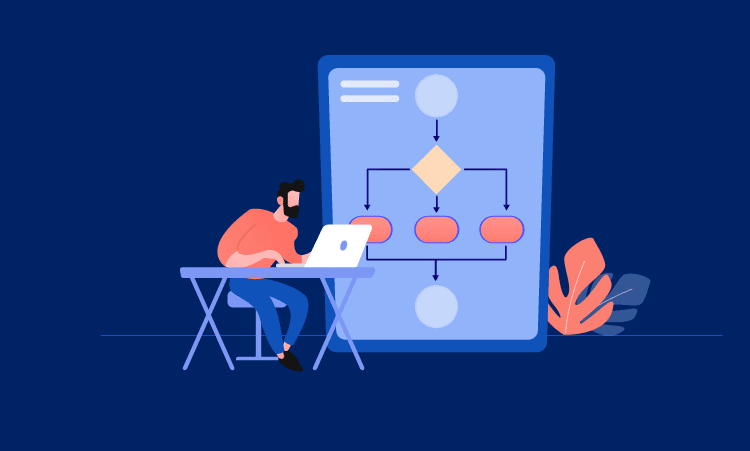Top 5 Barriers for the Industrial Internet of Things (IIoT) in Enterprises
August 23, 2021
Introduction
When we talk about the primary mission of producing high-quality products as cost-effectively as possible, the reality is more about capitalizing on the current capital businesses already have than about the promise of a far-future. A major obstacle to becoming more connected is getting data in older machines in the production area is that many of these machines do not have digital controls or they require retrofits and external sensors to pull in operational data. This can often be difficult and expensive, so a clear profit margin must be established for this endeavor.
For this reason, companies focus on the most critical devices that may have had problems in the past or represent a critical control point affecting deliveries. The next problem is that even if the data is available, there is uncertainty around what to do with it. Raw data doesn’t have much value unless there is a way to interpret and make sense of it.
Let’s talk about the 5 basic barriers when deploying IIoT applications in enterprises.
Barrier 1: Vision

Any enterprise loT project dramatically increases the number of connected devices or things on the corporate network – that means a comprehensive system for tracking each device and the users accessing them is essential. Not only can you authorize and verify the identity of individual devices and users, but you also need to be immediately alerted to any authorization or performance issues.
As such, any lloT (Industrial loT) implementation needs to be built around a single centralized platform and Dashboard to manage the entire ecosystem. Not only will this platform allow you to track each endpoint and user in your IloT (Industrial loT) implementation, it will also enable you to clearly understand the data collected and the business actions you should take. implemented as a result of those insights. IoT (Industrial lo7) visibility is not merely about day-to-day operations; it is also about information visibility.
Barrier 2: Security

As mentioned above, lying on IIoT (Industrial loT) means introducing a lot of new potential points to your business network – access points that are likely to be exploited by cybercriminals. All of those endpoints should be adequately protected against malware and malicious hacking, as well as accidental or intrusion damage as a result of digital vandalism. Meanwhile, the massive amount of data generated and transmitted in loT (Industrial lo7) infrastructure requires protection from the same number of threats.
Achieving full IloT security means developing security by design, rather than placing it after the Industrial loT infrastructure has been laid. Your security solution needs to identify and authorize each device and actively protect each of them from infection and intrusion. It also needs to encrypt all data in your entire Industrial IoT ecosystem, both in transit and at rest.
Above all, you need to treat Industrial loT security as a journey, not a one-stop destination As threats to your IIoT infrastructure continue to evolve, so your security tools, technologies, and processes need to evolve as well.
Barrier 3: Integrating multiple systems

A survey found that 77% of loT professionals consider interoperability the most important challenge facing Industrial loT. This makes sense, the typical production environment has both a large amount of different hardware and a strict set of protocols that may not be interconnected. Then, lloT (Industrial loT) comes along and tries to put a single connected infrastructure on top.
There are different approaches to dealing with this challenge. A cloud-based multi-purpose platform for managing the overall IoT (Industrial IoT) architecture is usually a good place to start, as is using standard protocols whenever possible, such as HTTP and MQTT Protocol Security.
Open industry interoperability standards should also be considered. Two examples are the Open Platform Communications Standard (OPC) and the OPC Unified Architecture specification.
Barrier 4: End-users of the system

With any new enterprise technology implementation, hardware and software is only half of the picture. Those technologies must also be used – effectively and appropriately – by employees.
In terms of IloT (Industrial loT), this can present some interesting challenges:
- How can you ensure that every employee understands the new implementation, not only in terms of operating connected things but also in terms of using the collected data to drive business actions?
- How to change roles as IloT (Industrial loT) promotes a more proactive and predictive approach to equipment maintenance
Successful IIoT implementation involves careful employee training plans and a review of all job roles and responsibilities to consider how they change in the light of new technology.
Barrier 5: Orientation of investors

Many manufacturers are simply gaining insight into their existing properties. They are looking at how to improve operational efficiency by knowing what is happening in the production area. Tracking historical trends to learn, diagnose, and improve uptime and performance. In parallel also identifying trends that could disrupt operations or quality performance.
Conclusion:
Today’s leading manufacturers know that industrial IoT is a strategy they can’t afford to ignore because the chances are that those who ignore it will be like many consumer companies that have missed out on the Internet. They know that it is important to start rolling out the connected IIoT Platform that will drive Industrial IoT now instead of waiting.
Most manufacturers don’t have a data scientist on hand to help with this effort. The hype around big data is that manufacturers having access to data will change the way businesses work, but the reality is that digitization just creates a platform to understand what is going on in any given asset. Therefore, finding a way to visualize data will create the best conditions for system implementation and management. It’s about discovering ideas and opportunities for improvement.
Keep reading about
LEAVE A COMMENT
We really appreciate your interest in our ideas. Feel free to share anything that comes to your mind.
Our 16 years of achievements includes:
10M+
lines of codes
2400+
projects completed
900+
satisfied clients
16+
countries served




